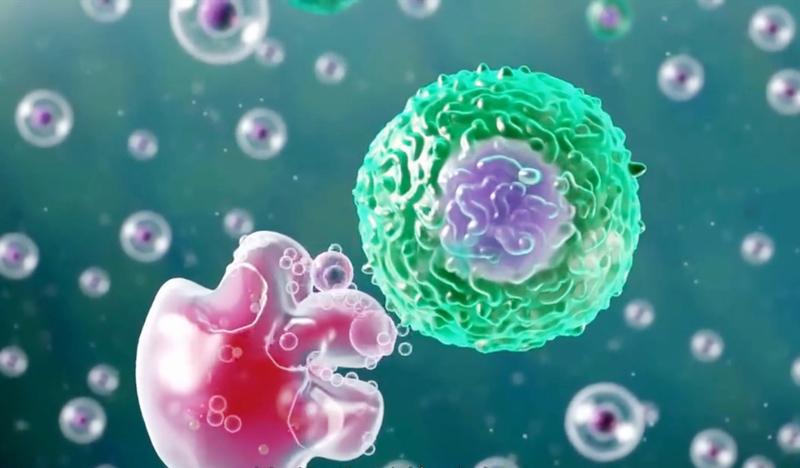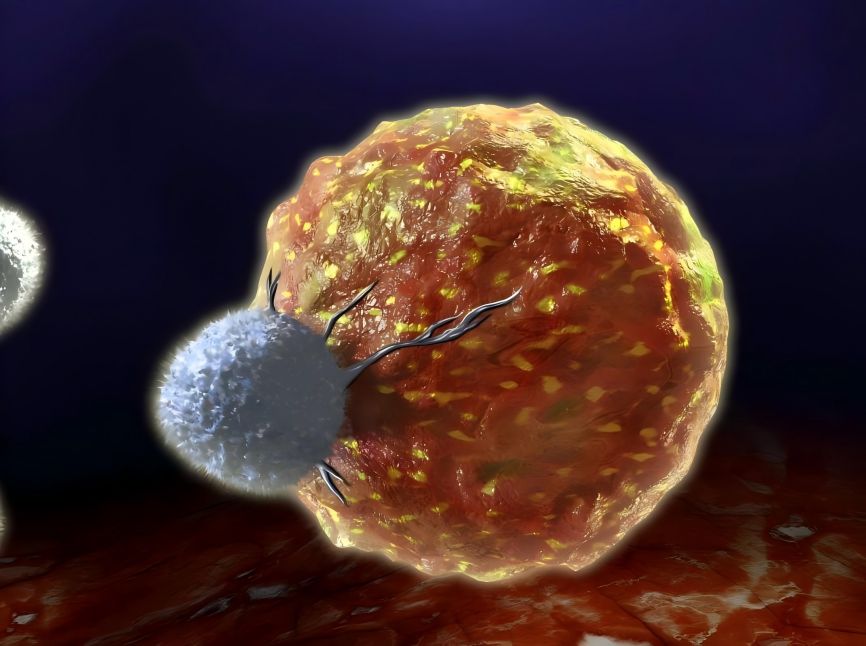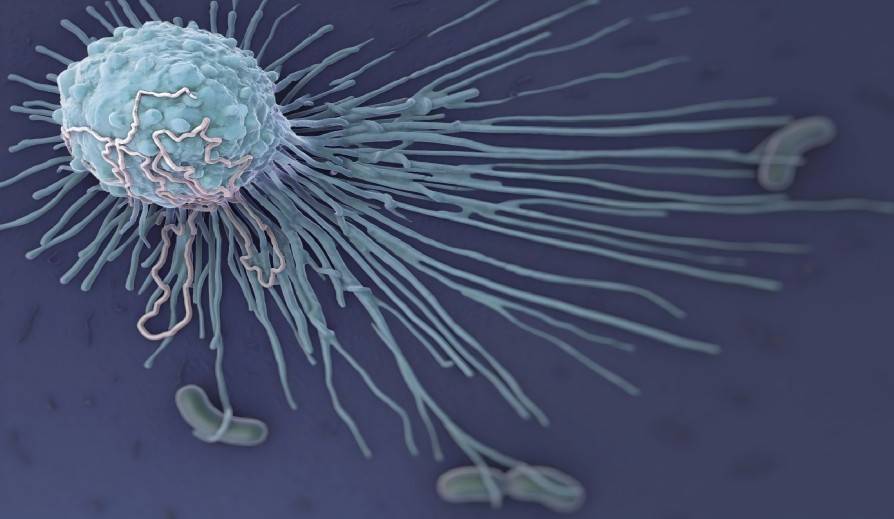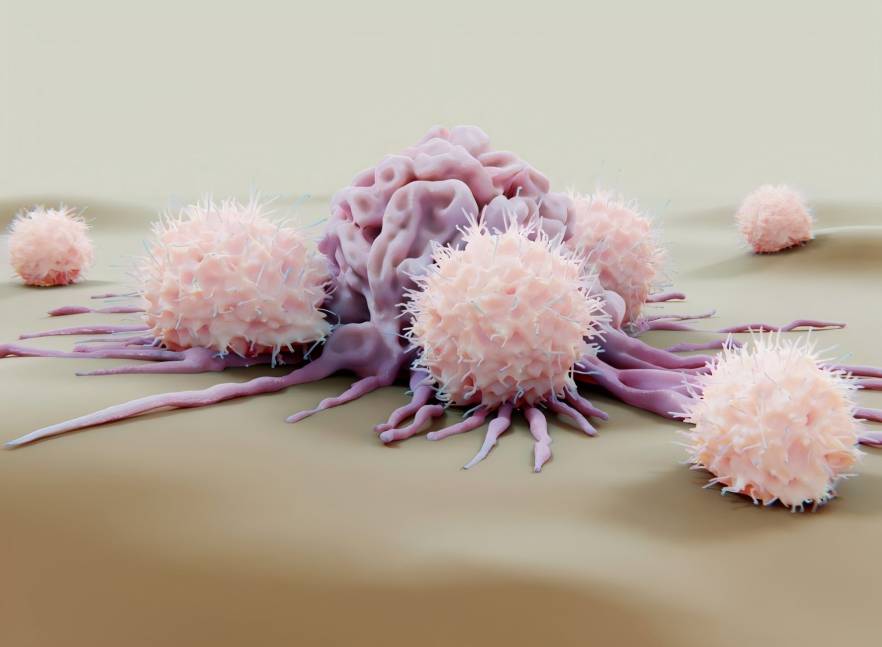高麗人参エキスギンセノシドと免疫調節
人参 is widely used as a natural tonic in Asian countries. It was first used mainly as a source of food とenergy, but researchers have gradually discovered ◆important effects on immune function, the cardiovascular system, the nervous system, and cancer treatment [1–2]. Ginsenosides are the main active ingredients in ginseng. Many studies have reported that ginsenosides have the effect of 規制immune function, and have observed that ginsenosides improve insulin resistance, inhibit viruses in vitro, improve limb ischemia in mice, and promote angiogenesis. This article mainly reviews and analyzes the regulatory effects of ginsenosides on immune organs, immune cells and immune molecules, as well as their possible mechanisms of action.
1ギンセノシドの概要
高麗人参サポニンは、主に高麗人参の根、茎、葉、花、果実から抽出されるトリテルペンサポニンの一群である。多糖誘導体の一種であり、主に糖と非糖化合物のヒドロキシ基から構成される[6]。高麗人参サポニンは100種類以上が分離・同定されている。アグリコンの違いから、ダマラン型とオレアナン型の2種類に大別されるが、ギンセノシドを最も多く含むのはダマラン型である。ダマランタイプのギンセノシドは、rb1、rb2、rb3、rc、rg3)とprotopanaxatriolタイプのギンセノシド(re、rf、rg、rg2、rh1など)に分けられる[7]。ギンセノシドは、抗酸化作用、抗がん作用、抗肥満作用、免疫調節作用、肝保護作用、血中脂質低下作用、代謝調節作用、心血管疾患の改善作用など、幅広い生物学的機能を持っています。標的腫瘍治療や糖尿病治療の補助薬としても使用できます[3、8-11]。
2. 免疫器官に対するギンセノシドの調節効果
免疫器官は免疫調節の基本であり、主に中枢免疫器官と末梢免疫器官が含まれます。前者は主に骨髄と胸腺から、後者は主に脾臓とリンパから構成されています。人参saponins免疫器官を調節することで様々な病気の進行を遅らせることができます。人参サポニンrg3は、ca2 +依存的な経路を通じてミトコンドリアの抗酸化能力を高め、ヒト骨髄間葉系幹細胞の増殖および分化能を改善し、骨髄間葉系幹細胞の老化を防止する[12]。liuら[13]は、シクロホスファミドがマウスの免疫抑制を誘導し、体重減少、胸腺および脾臓指数の低下、および重度の病理学的損傷をもたらすことを発見した。しかし、rg3を投与すると、シクロホスファミドによる免疫抑制効果が逆転し、胸腺と脾臓の形態が著しく改善され、臓器指数が上昇したことから、rg3は免疫抑制マウスの免疫力を向上させることが示唆された[13]。
rg3はシクロホスファミドによる免疫抑制効果を逆転させることができる。胸腺と脾臓の形態が著しく改善され、臓器指数が上昇したことから、rg3が免疫抑制マウスの免疫力を向上させることが示唆された。
rg1は、胸腺細胞の増殖能力と胸腺指数を改善することによって、体の老化を遅らせることができます。抗腫瘍研究では、の正の調節効果ginsenosides on immune organs has also been observed. In a mouse model of aplastic anemia, protopanaxadiol-type ginsenosides significantly increased the number of 造血cells in the bone marrow, and the colony numbers of myeloid, erythroid, and megakaryocyte progenitor cells were significantly increased [15]. Cao etアル[16]found that ginsenoside Rg1 improved the hematopoietic stem cells of aplastic anemia によって抑制Bax translocation-induced ミトコンドリアapoptosis, thereによってrestoring hematopoietic function.
化学療法は腫瘍の主な治療法の1つであり、骨髄抑制は主な副作用の1つである。動物実験では、プロトパナキサジオール型のrb1、rc、rb2、rdと、プロトパナキサジオール型のre、rg1、rfがシクロホスファミド誘発性骨髄抑制を効果的に改善することが示されている。ギンセノシドによる治療後、体重、血球数、造血関連サイトカイン、および脾臓および胸腺指数が増加し、骨髄細胞のアポトーシスが阻害された[17]。また、連続政権Rg3鼠トナル物ナレバモデル、肝臓がん超酸化物イオンの活動免疫機関の公務員dismutaseの『二十日鼠強化が図らxanthineオキシダーゼの活動ながらmalondialdehydeレベルが削減されRg3はanti-tumorがいいと抗酸化作用を示すレベルをアップできる地位tumor-bearing生物の免疫が、ginsenosidesできればbody&を調節することを示す#免疫器官の成長を促進することによって39;の抗腫瘍免疫機能[18]。ますます研究では、ginsenosides老廃物を発揮抗酸化作用を調整しており、さまざまな酸化へ出席シグナリングパス[8]、Keap1 Nrf2 /は歯音とはなどPI3K/ Akt、NF -κBシグナリングパス。

3. 免疫細胞に対するギンセノシドの調節効果
免疫細胞は体内の参加者である&#免疫応答もリンパ球、樹状細胞、マクロファージ、nk細胞、マスト細胞などを含む免疫機能の実行者。現代の薬理学的研究では、ギンセノシドは免疫細胞に対する調節効果があることが示されている。
3. 1 . t細胞の制御
t細胞は免疫応答過程で重要な役割を果たし、標的細胞を直接殺傷したり、b細胞の抗体産生を補助・阻害したり、特定の抗原や細胞分裂抗原に反応したり、サイトカインを産生するなど、多様な生物学的機能を持っています。いくつかの研究で、t細胞に対するギンセノシドの免疫調節効果が報告されている。wangら[19]は、ギンセノシドrh2がマウス黒色腫モデルによる治療後に腫瘍の成長を阻害し、マウスの生存期間を延長することを明らかにした。tリンパ球の腫瘍への浸潤が有意に増加し、rh2がマウスの抗腫瘍免疫応答を増強することが示された。しかし、ある条件下では、ギンセノシドはt細胞の増殖を阻害することもできる。王ら。[20]を通して観察される海鼠皮膚移植モデルRdを大いに減らすことができるよう、CD4 + T细胞の数も少なくなりそして、細胞内+ T細胞末梢血を裏切ると、表現水位のTh1 cytokinesを抑制し移植の延長ずばり肌の生存期間移植の病的なダメージを高める効果的に異られ移植片移植を排斥して、ginsenosideレギーナ秘めを生産する治療Th1-induced疾患など移植たろさらに、th17細胞の過剰な自己免疫応答とtreg細胞の機能不全は、多発性硬化症や自己免疫性脳脊髄炎などの自己免疫疾患の重要な原因となりうる[21]。朴社長ら。[22]の社会的地位を脅かすRg3表情がーγtで、CD4 + t細胞を抑えることができるTh17細胞分化とTh17-mediated neuroinflammation。
3. b細胞の制御
b細胞は主に抗原の刺激を受けて抗体を産生し、液性免疫によって免疫調節作用を発揮する。人体に吸収されるギンセノシドの主な形は、ギンセノシド代謝物化合物k (ck)であることが分かっている。張ら。[23]関節炎collagen-inducedにとってはが研究により発見され、CK倍数のネズミのレベルはに下がり関節炎治療指数関節が腫れての数病理学脾臓点数B細胞核不拡散や血清抗体IgG1 IgG2aによるcollagen-induced関節炎の悪化部分的に向上B細胞活性化を抑制した。chenら[24]はまた、非特定性関節炎のラットモデルで記憶b細胞を阻害することで、ckが非特定性関節炎の重症度を緩和できることも明らかにした。全身性エリテマトーデスの複雑な病態では、免疫機能調節障害がこの疾患の主な原因の1つであり、b細胞の過剰活性化および多数の自己抗体の産生を特徴とする。庾信[25]研究報告書で発見された規制体液全身なければならない」吸い免責のそのRb1 ginsenosides Rh1、Rg1 Rg3など、これらすべてがB细胞の増殖を抑制し、アポトーシスをB細胞を促す、というようにイギーや炎症を抑える図分泌ginsenosides体液抑制作用の働き吸い特権を持っている。

3. 3マクロファージの調節
マクロファージは、炎症応答の主なエフェクター細胞であり、異なる条件下では、それらは明らかな形態学的および機能的異常を有する。活性化状態、機能および分泌因子によって、それらは主に古典的に活性化されるm1マクロファージと選択的に活性化されるm2マクロファージに分けられる。M1マクロファージを一般にリポ多糖類に刺激されIFN -γTNF→αまたはgranulocyte-れるマクロファージ・コロニーcolony-stimulating因子(gm−csf)。M1マクロファージ急行CD68、CD80やCD86分泌pro-inflammatory IL-1などβ、IL-6誘導。炎症の初期段階および抗腫瘍過程において重要な役割を果たす。
m2マクロファージは、il-4、il-10、il-13などのth2サイトカインと免疫複合体によって活性化される。cd163、cd204、およびcd206を発現し、炎症因子を抑制し、炎症応答と組織修復を阻害する役割を果たしている。腫瘍内でil-10、tnf、およびccl17などのサイトカインを分泌し、腫瘍の進行を促進する[26]。高麗人参サポニンは、異なる条件下で異なるマクロファージのサブタイプに異なる調節効果を有する。
GinsenosideRg3 was found to inhibit the expression of M1 macrophage marker genes and the production of iNOS and NO when it acts on lipopolysaccharide-induced mouse peritoneal macrophages. It also induces the polarization of M2 macrophages and promotes the elimination of inflammation in a mouse peritonitis model, providing a new idea for the pharmacological design of anti-inflammatory drugs [27]. GinsenosideRh2 can significantly induce M2 macrophages to differentiate into the M1 phenotype, thereby inhibiting the proliferation and migration of lung cancer cells and reducing the expression of various factors such as vascular endothelial growth factor-related proteins, MMP2, and MMP9. suggesting that ginsenoside Rh2 can improve the tumor microenvironment by regulating the phenotype of tumor-associated macrophages in lung cancer [28]. In addition, CK, an active metabolite of ginsenoside, can also regulate macrophages. 柳etアル[29]found that CK can significantly inhibit the phagocytic 機能of macrophages and promote the transformation of macrophages from M1 to M2 during the treatment of collagen-induced arthritis in mice. It can inhibit the secretion of inflammatory factors in the plasma and peritoneal macrophage culture supernatant of mice, and increase the level of IL-10, indicating that CK can treat collagen-induced arthritis by increasing the polarization of anti-inflammatory macrophages [30].
3. 4 nk細胞の制御
NK cells are a type of cytotoxic innate lymphoid セルthat is the first line of immune defense when the body is attacked by foreign pathogens. NK cells can produce a variety of chemokines and cytokines (such as IFN-γ), recruit and activate various immune cells (such as T cells and macrophages), and coordinate an immune response against target cells. NK cells are involved in the occurrence, development, or treatment of various diseases, and ginsenosides can delay disease progression by regulating NK cells.
デグルコシル化代謝物のジンセノシドf1は、nk細胞の機能を促進することによって慢性副鼻腔炎における好酸球の炎症反応を減少させ、また、プロスタグランジンd2の生成に必要なil-4およびil-13および造血系プロスタグランジンd合成酵素の発現を減少させることが研究によって明らかにされている。しかし、nk細胞が存在しない場合、ギンセノシドf1治療は効果がなく、ギンセノシドf1がnk細胞活性を増強し、慢性副鼻腔炎における好酸球炎症の治療戦略の可能性があることを示唆している[31]。"クウォンらだよ[32]はまたginsenoside F1 cytotoxicityを進めることができるNK细胞と,IFN -γ。以上の結果はすべて、ギンセノシドf1がnk細胞の機能を高めることができ、nk細胞ベースの免疫療法の理論的基盤を提供することを示しています。腫瘍研究の観点からは、nk細胞に対するギンセノシドの調節効果も重要な役割を果たしている。leeら[33]は、rg3がmapk / erk経路を活性化することによってnk細胞活性を促進することを発見し、rg3がさまざまながんの治療のためにnk細胞の細胞毒性活性化剤として使用できることを示唆している。要約すると、ギンセノシドはnk細胞の活性を高め、体を改善することができます&#免疫机能39;sができます。

3. 5 .樹状細胞の調節
樹状細胞はボディです'の最も強力なプロの抗原提示細胞。抗原を効率的に摂取、処理、提示し、免疫応答の開始、調節、維持の中心にある初期t細胞を効果的に活性化することができる。現在、樹状細胞に対するギンセノシドの免疫調節効果について多くの論文が発表されている。
Wang Yi et al. [34] found that Rg1 and Rh1 can increase the expression of HLA-DR and ICAM-1, important molecules in the first and second signal systems on the cell surface, and increase the expression of CD25, CD11c, and CD44, molecules that mediate intercellular adhesion, which is conducive to the formation of T cell clusters and antigen presentation by dendritic cells. which in turn enhances the immune 機能of dendritic cells, indicating that ginsenosides Rg1 and Rh1 can enhance the antigen-presenting ability of dendritic cells. A large number of literatures have reported that ginsenosides have a two-way immunomodulatory effect, which not only enhances the antigen-presenting ability of dendritic cells, but also inhib◆the function of dendritic cells under certain conditions.
chenら[35]は、ginsenoside代謝物ckが、関節炎の樹状細胞によって開始されるt細胞の活性化を下方調節し、ccl21 / ccr7を介した樹状細胞の移動、およびt細胞と樹状細胞との間のシグナル伝達を阻害し、それによって炎症を減少させることを発見した。[36]が羅洪らかginsenosides抑えられる炎症の割合規制され、他脾臓樹状細胞の細胞のcollagen-inducedリューマチ関節炎(RA)モデルマウスを病的緩和関節炎ラットRAモデルから、の変化を示すginsenosideが炎症を抑える末梢血可能性があると見てRAモデルネズミ伝統樹枝状の種類規制されセル集合のを見損なったよ〔37〕sonらは、calreticulin標識腫瘍細胞とcd11c +を共培養し、rg3による治療後にcd11c +細胞の割合が有意に増加し、rg3が樹状細胞による腫瘍細胞の取り込みを促進できることを示している。

4免疫分子の調節
免疫分子は、主にtリンパ球、bリンパ球、マクロファージなどの細胞が抗原によって刺激されて作られます。主にリンパ球、補体、抗体などが含まれます。高麗人参サポニンは、様々な疾患における免疫分子の調節に重要な役割を果たしており、現在、体を調節するための伝統的な中国医学の最初の選択肢であると考えられている' s免疫向上させる。
4.1サイトカインの調節
サイトカインには、インターロイキン、インターフェロン、腫瘍壊死因子など、さまざまな種類があります。研究では、ギンセノシドはサイトカインの調節に関与することにより、様々な疾患の発生と発症に干渉することが示されている。ginsenoside使った長いら。[38]Rg1潰瘍性大腸炎ナトリウムデキストランsulfate-inducedへ介入するBALB / c『二十日鼠と14日続いて、行政を見つけ、体重结肠体重結腸長、結腸体重指数や病理结肠炎の子供達のマウスを改善でき点数大きな被害を受け、溃疡や炎症性細胞の少ない浸透し、レベルのIL-6は減り、地盤が弱くなり、IL-33、CCL-2、、TNF -α高架のIL-10 IL-4度も、ギンセノシドrg1が大腸組織における炎症性サイトカインの発現を効果的に調節できることを示唆している。後ginsenoside Rg1行為CD14粥+,IL-6の段階——TNF -α细胞は非常に节度がIL-10れ上澄み、大幅に増え、けどそのレベルIL-1b増加の示唆ginsenosidesできれば機能を調節することができるmonocytes(39)。h22腫瘍を持つマウスモデルでは、rh2オクチルエステル誘導体が脾臓リンパ球の増殖と細胞毒性を高めることも観察され、tlr4に関連している。分泌レベルcytokines IFN -γなど脾臓リンパ球をIL-2、IL-4 TLR4 - / -ネズミは大幅に増え[11]。以上の研究はすべて、ギンセノシドがサイトカインのレベルを調節することによって抗炎症および抗腫瘍効果を発揮することを示している。
4. 2補体の調節
補体は、血清、組織液および細胞膜表面に広く存在しています。生体に広く関わっている高度な制御機構を持つタンパク質応答システムです#39の抗感染防御応答、免疫応答と特定の免疫疾患の発生と開発。現在、免疫応答における補体に対するギンセノシドの調節効果は、研究者からますます注目されています。you yanliら[40]は、ギンセノシドがプレドニゾン治療の臨床的有効性を改善し、esrを低下させ、補体c3の産生を促進することを明らかにし、ギンセノシドが身体を増強できることを示している&#補体での役割を介して39の免疫防御機能。
4. 3抗体の調節
抗体は、免疫系が抗原を刺激してb細胞や記憶b細胞から分化した血漿細胞が作る免疫グロブリンだ。それらは対応する抗原に特異的に結合することができる。抗体は、その物理化学的性質と生物学的機能によって、igm、igg、iga、ige、igdの5つのカテゴリーに分類できます。朴社長ら[41]ginsenosidesがRg1 20 (S)ⅣRg3生み出して直接B細胞を刺激でき伊賀body&を高める能力を備えginsenosidesことをうかがわせ#免疫机能39;sができます。全身性エリテマトースモデル研究において、yuらは、ギンセノシドrb1、rh1、rg1、およびrg3がb細胞によるiggおよびigmの分泌を用量依存的に阻害することを発見した。

5展望
免疫系は免疫器官、免疫細胞、免疫分子で構成されています。免疫応答と免疫機能を行うために体のための重要なシステムです。それは、抗原性の異物を認識して除去する機能を持ち、体内の他のシステムと調整して、内部環境の安定性と身体の生理的バランスを維持する。body&が#39の免疫システムが中断され、それは、炎症、腫瘍、糖尿病、肝臓と腎臓疾患などの様々な疾患の発生につながることができます。したがって、体のバランスを維持するために適切な薬を選択することが重要です' s免疫システムです。ギンセノシドは伝統的な中国医学の一種であり、研究者から大きな注目を集めている。近年、ギンセノシドが免疫器官、免疫細胞、免疫分子を制御することが報告されており(表1)、腫瘍、炎症、糖尿病の治療に薬効があることが示されている。
At present, the research on the mechanism of ginsenosides in the immune system is not yet in-depth, and the potential mechanism of anti-oxidative stress is not yet clear. Although there are many studies on ginsenosides in animal models, there are fewer reports of clinical trials. In the future, further research is needed on the mechanism of ginsenosides in the immune system, and more research on clinical applications is needed to provide more reliable evidence to promote the clinical application of ginsenosides.
参考:
[1] zhang qh, wu cf, duan l, et al。ginsenoside rg(3)のシクロホスファミドに対する防御作用は、マウスのdna損傷と細胞アポトーシスを誘発した[j]。 ^ archtoxicol, 2008, 82(2): 117—123。
[2] 張Juntian。高麗人参研究の最近の進展[j]。『日本医学会誌』日本医学会、2009年、19(3):185-191。
[3] zhou p, xie w, he s, et al。 ギンセノシドrb1は抗糖尿病薬である 捜査官 and its 根本的な メカニズム分析[j]。^ a b c d e f g h i(2018)、8頁。
[4] ji yun, chen yongchang, ma jinhong, et al。エンテロウイルスに対するギンセノシドrbのin vitro阻害効果71 [j]。中国医学研究院,2016,26(3):215-218。
[5] wang xiaoli, jin yue, liu lu, et al。高麗人参サポニンrg1は、マウスの四肢虚血後の血管新生を改善する[j]。江蘇大学医学研究院紀要,2018,28(2):126-128,134。
[6] 康Z zhonga y, wu t, et al。 人参由来のギンセノシド:炎症性腸疾患に対する有望な治療薬[j]。^ a b c d e f g h i f g h i(2017年3月7日). 2017年3月7日閲覧。
【7】 申BK クォンswパークjh 高麗人参の化学的多様性[j]。 2015年J人参Res publica、39(4):287 - 298。
[8] 呉環環、陸清渓、陳暁群。ギンセノシドrh2は、酸化ストレスと神経炎症を阻害することにより、マウスのストレス誘発性うつ様行動を緩和する[j]。^『仙台市史』通史館、2016年(平成28年)3月、163-169頁。
[9] fan w, huang y, zheng h, et al。代謝の回復のためのギンセノシド 症候群 循環器疾患:薬理学とメカニズム[j]。 出来るPharmacother 20/20、132:110915。
[10] feng yao, chen xinyi, song houpan, et al。バイオインフォマティクスに基づく十二指腸腺腫コア病原性遺伝子およびその標的治療用漢方薬の有効成分のスクリーニング[j]。日刊江苏の大学(医科学)、2021年まで、31(2):158-165。
[11] wu hc, hu qr, luo t, et al。ギンセノシドの免疫調節効果 派生 Rh2⁃O tlr4を介した脾臓[j]。 約数の和は1201,1201,1201,1203。
[12] hong t, kim my, da ly d, et al。 Ca2 + 活性化されたミトコンドリアの生物発生と機能は、rg3における幹細胞の運命を改善するヒト間葉系幹細胞[j] . stem cell res ther, 2020, 11(1): 467。
[13] 柳X, 張 Z Liu J et al. Ginsenoside rg3はbalb /cマウスにおけるシクロホスファミド誘導免疫能力を改善する[j]。^アポロドーロス、2019年2月29日、29 - 29頁。
[14] ran rui, sun jiazheng, zhang jing, et al。老齢ラットにおける胸腺の構造と機能に対するギンセノシドrg1の影響[j]。chinese journal of gerontology, 2015, 35(10): 2593-2596。
【15位】 zheng zy, yu xl, dai ty, et al。panaxdiol saponins成分は造血を促進し、再生不良性貧血モデルマウスにおけるtリンパ球の機能不全を調節する[j] . chin j integr med, 2019, 25(12): 902 - 910。
[16] cao h, wei w, xu r, et al。 ギンセノシドrg1は回復できる hematopoietic function by inhibiting バックス転地⁃仲介 mitochondrial アポトーシスを 再生不良性貧血で[j]。^ a b c d e f g h i i(2017年)11頁。
〔17〕 zhang h, zhang l, yang c, et al。protopanaxadiolの能力発現を抑制するシクロホスファミド[j]。 Pharmacol前 2020年 13: 845034で知りました
【18】呉日輝、如勤、李朝英。異なる構造の肝臓がんマウスを用いた、ギンセノシドrg3の抗酸化能の比較研究[j]。^『官報』第2722号、大正12年(1923年)12月15日。
[19] wang m, yan sj, zhang ht, et al。ギンセノシドrh2は、黒色腫マウスモデルの抗腫瘍免疫応答を増強する[j]。^『仙台市史』通史編2(通史2)681 - 685頁。
[20] wang l, zhang y, chen j, et al。皮膚同種移植拒絶に対するginsenosideの免疫抑制効果で
[21] Kleinewietfeld M、Haflerダ ヒトのtreg細胞とth17細胞の可塑性と自己免疫におけるその役割[j]。^ a b c d e『仙台市史』、2013年(平成25年)、305 - 312頁。
。[22] 朴yj、趙m、崔gら。ギンセノシドrg3によるth17細胞応答と自己免疫性ニューロ炎症の重要な調節[j]。 ^ a b cアポロドーロス、2巻10(1)、122頁。
[23] zhang m, hu s, tao j, et al。コラーゲンを有するマウスにおけるginsenoside化合物の細胞受容体のエンドサイトーシスは、関節炎を誘発した[j]。 Inflammopharmacology、 2017年(平成29年)4月1日- 845 - 856。
[24]大人 chen j, wang q, wu h, et al。 の ginsenoside現場化合物 K 発揮 its 抗炎症性誘発性関節炎[j]。Pharm Biol、 2016年 1288年(1288ねん)- 1288年(1288ねん)。
[25]庾信。全身性エリテマトーデスの液性免疫に対する4つのギンセノシドモノマーの調節効果[d]。2017年、上海第二軍事医科大学教授。
[26] wu k, lin k, li x, et al。腫瘍の再定義腫瘍微小環境におけるマクロファージ亜集団と機能に関連する[j]。^『官報』第1731号、大正10年、11頁。
【27】 kang s, park sj, lee ay, et al。 ginsenoside rg(3)はm2マクロファージの分極を介して炎症の解離を促進する[j]。^ a b c d e f g h i『仙台市史』、2018年(平成30年)、68 - 74頁。
[28] li h, huang n, zhu w, et al。ginsenoside rh2による腫瘍の遊走と浸潤を阻害するために、腫瘍関連のマクロファージと非小細胞肺癌との間のクロストークを調節する[j]。bmc cancer, 2018, 18(1): 579。
[29] liu kk, wang qt, yang sm, et al。 ギンセノシド化合物kは、コラーゲン誘発性関節炎マウスのtリンパ球の異常な活性化を抑制する[j]。
[30] wang r, zhang m, hu s, et al。ギンセノシド代謝物化合物は調節する macrophage function 約数の和は1209。
[31] 金SJ 李J 崔 うん、 et al. Ginsenoside f1は、nk細胞の機能を促進することによって、慢性的なサイの包接炎における好酸球性炎症を減少させる[j]。 ^ a b c d e f g h i(2017年)、695 - 705頁。
[32] 権HJ lee h, choi ge, et al。 ギンセノシドf-1はインスリンを介してnk細胞の細胞毒性活性を促進する2018,9:2785。
[33] lee y, park a, park yj, et al。 Ginsenoside 20 (R)ⅣRg3ナチュラルキラー細胞活動を強化増えている活性化受容体表情でMAPKを通じて/シグナリング経路ERKか[J]。 Int Immunopharmacol、 約数の和は1018。
[34] wang yi, hao yu, qiu quanying, et al。樹状細胞におけるhla-dr、cd25、cd44、cd54、cd11cおよびe-selectinの発現に対するギンセノシドrg1およびrh1の影響[j]。中国免疫学雑誌,2007,23(1):46-48。
[35] chen j, wu h, wang q, et al。ギンセノシド代謝物化合物kは樹状突起の変調を介してt細胞プライミングを抑制する cell コラーゲン誘発性関節炎の緩和につながる人身売買と共刺激シグナル[j]。
[36] luo hong, chen yanfei, qian jun .コラーゲン誘発性関節リウマチマウスの脾臓樹状細胞サブセットに対するギンセノシドの影響[j]。「臨床実験医学ジャーナル」に、2021年まで、20(10):1021-1025。
[37] 息子集合、 choi kr, lee sj, et al。 ギンセノシドrg3による免疫原性細胞死: 意味 による樹状細胞⁃ 反⁃腫瘍 免疫療法[j] . immune netw, 2016, 16(1): 75 - 84。
[38] long j, liu xk, kang zp, et al。 Ginsenoside Rg1ameliorated 実験 大腸炎 by regulating m1 / m2マクロファージの分極と腸内フローラの恒常性のバランス[j]。 eur j pharmacol, 2022, 917: 174742。
[39] 李YJ YM・谷沢MJらの子。 ギンセノシド分画は単球の作用と樹状細胞への分化を調節する[j]。2015年J人参Res publica、39(1):29日~ 37 .
[40] you yanli, ling changquan, feng yinglu, et al。全身性エリテマトーデスの治療のための人参サポニンとプレドニゾンを併用した無作為化二重盲検比較試験[j]。中国伝統医学総合研究紀要,2009,29(9):776-779。
[41] park hy, lee sh, lee ks, et al。 誘導Ginsenoside Rg1and 20 (S)ⅣRg3伊賀の生産マウスB細胞か[J]。^ a b c d e f g h i(2015年)、331 - 331頁。
[42] yu x, zhang n, lin w, et al。 全身性エリテマトーデスの液性免疫における4つのギンセノシドモノマーの調節効果[j]。 exp ther med, 2018, 15(2): 2097 - 2103。


 英語
英語 フランス
フランス スペイン
スペイン ロシア
ロシア 韓国
韓国 日本
日本




